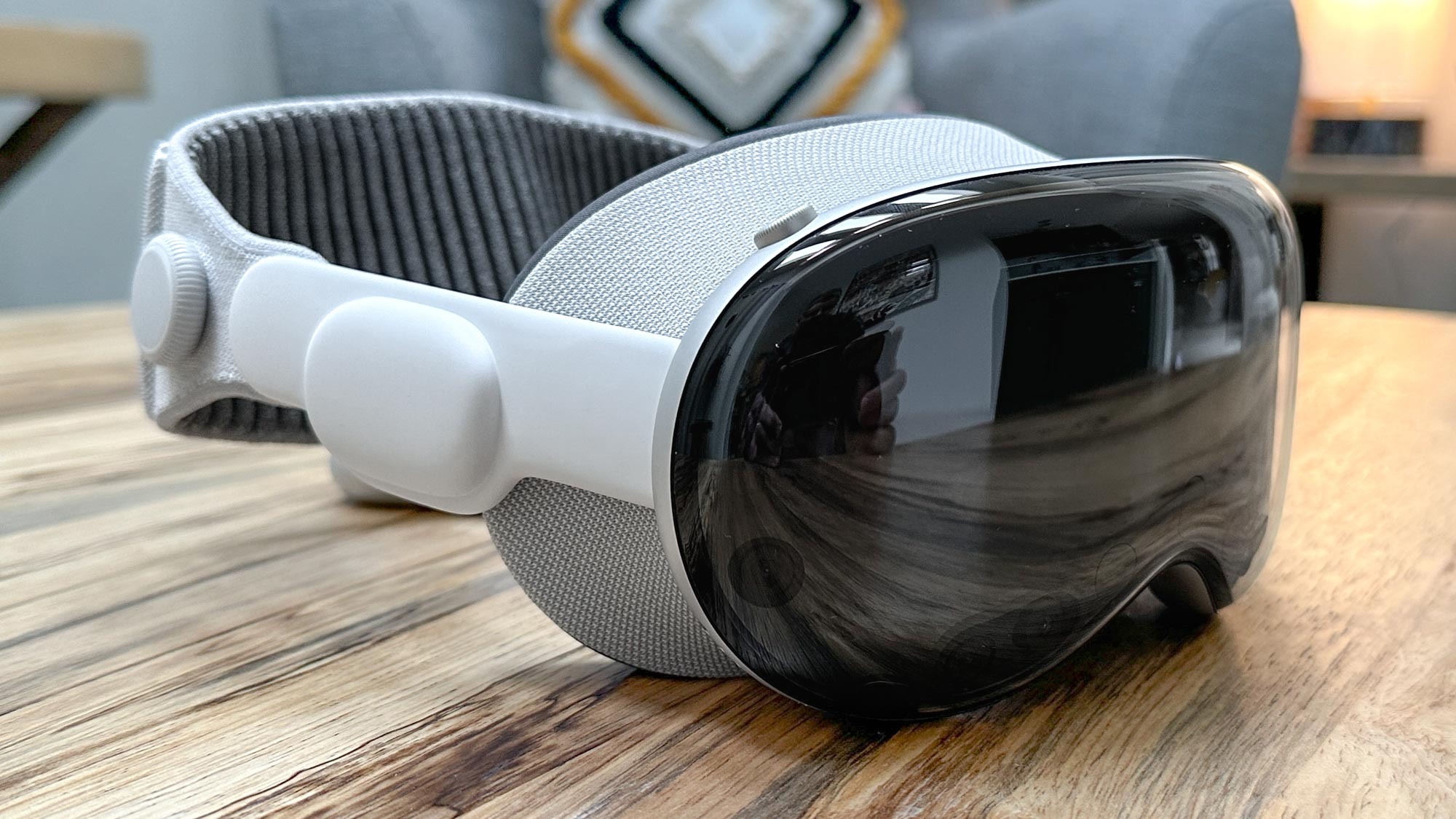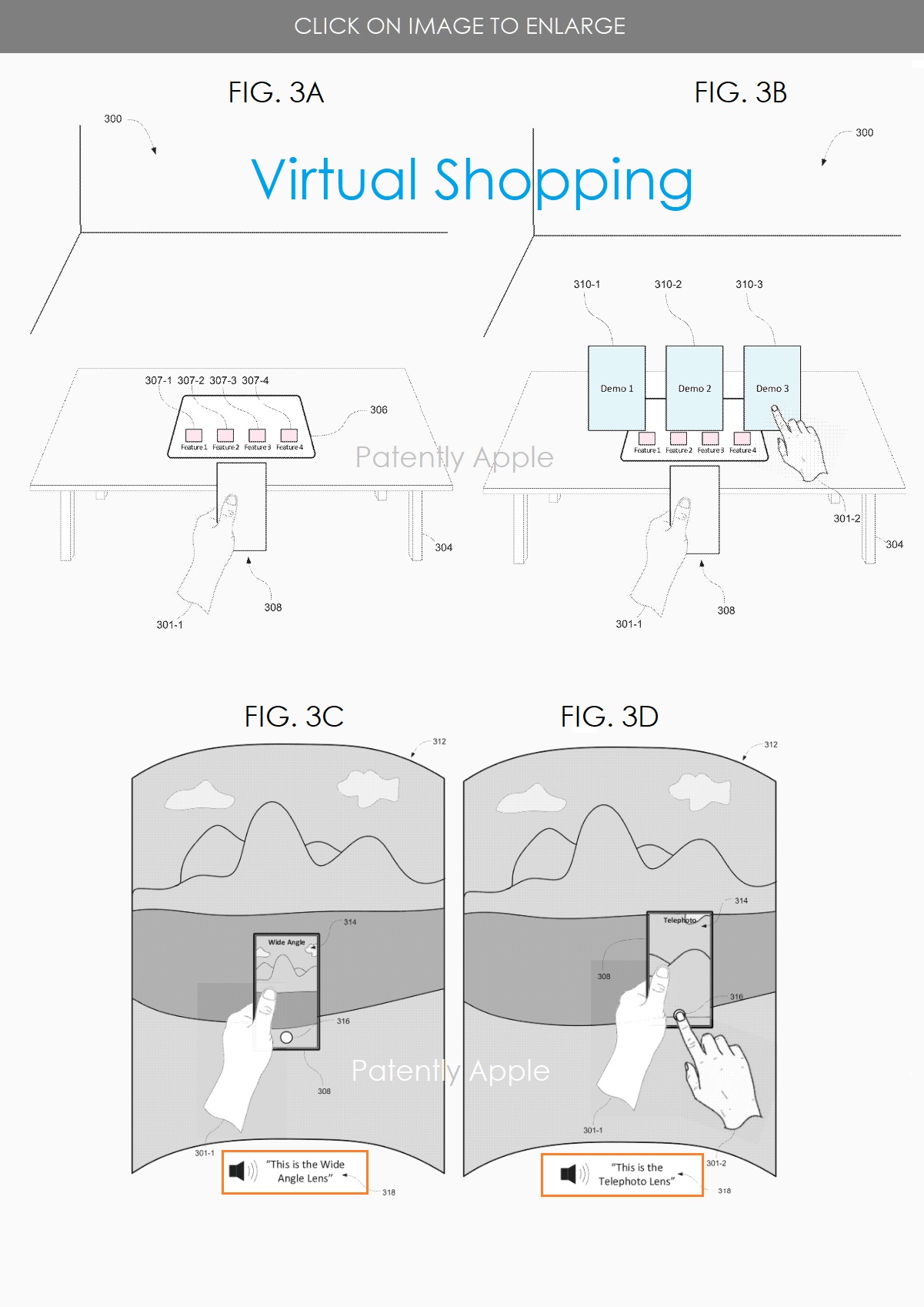
Don’t fancy braving the Apple Store queues to try the latest iPhone on release day? One day, you might be able to get a taster without even leaving the house, if a patent uncovered by Patently Apple comes to pass.
The patent, titled “Method of customizing and demonstrating products in a virtual environment,” imagines a world where customers could beat the crowds and experience Apple products from the comfort of their own living room, via a mixed reality headset — presumably the Apple Vision Pro.
In the most innovative imagining of this, the product demo takes the form of an “interactive demonstration in a simulated virtual environment.” As the images below show, you could ‘test’ the camera of a new iPhone in a virtual park, seeing how effective the telephoto lens is at capturing distant objects.

It could also be used to show the products in your own living room, via augmented reality. Handy for getting a feel of size on non-portable products like HomePod, Apple TV and iMacs.
Speaking of Macs, one of the more interesting concepts of the virtual demo is the ability to see the real-world impact of upgrades on devices.

In another image, Apple imagines the user being able to configure a desktop Mac with different components and seeing the change in performance via both virtual benchmarks and on-screen performance. In other words, you could see the benefit of paying extra for more RAM and a faster processor for yourself.
Will it ever happen?
The patent has some pretty big caveats attached to it, of course.
Firstly, there are things that you can only experience in person. Being able to ‘hold’ a virtual iPhone is obviously not the same as picking up the weighty real thing and feeling the edges press against your hand.
More importantly, this patent requires a virtual reality headset, and while the document doesn’t specify a Vision Pro by name, it’s hard to imagine Apple going beyond its own immediate hardware family. Not only are there not many Vision Pro owners in the world, but those who have bought a $3,500 headset are arguably more likely to have the spending power to make big tech purchases on a whim, without needing persuasion from a virtual demo.
It, therefore, seems likely that this is one of those patents that never become a commercially available product — or is at least left on the shelf until such a time that Apple has sold enough Vision Pro headsets to make it worthwhile. That, of course, may never happen, but the company reportedly has its sights on a cheaper version that could arrive as early as next year.
Even so, we wouldn’t put money on you shopping for an iPhone 17 on Vision Pro next year, let alone an iPhone 16 next month.







